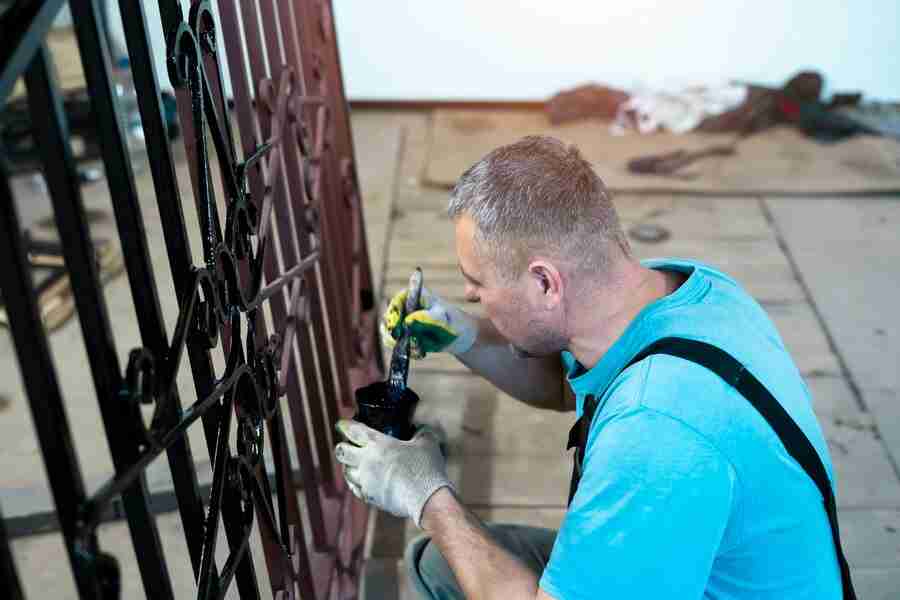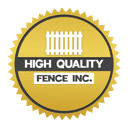
Welcome to our guide on “Sealing and Preserving Your Fence: What You Need to Know.” While a fence is a crucial element of any property, its exposure to the elements can lead to wear and tear over time. Understanding the importance of regular maintenance is key to ensuring the longevity and aesthetic appeal of your fence.
Fences, whether made of wood, metal, or vinyl, are subjected to various weather conditions, including rain, snow, and sunlight. This exposure can cause damage such as rotting, rusting, or fading, compromising the structural integrity and visual appeal of your fence. This is where sealing and preserving come into play – essential steps that can significantly extend the life of your fence.
In this comprehensive guide, we will delve into the fundamentals of fence maintenance, the role of sealing and preserving, and the steps you need to take to protect your investment. From choosing the right sealant to understanding the application process and common mistakes to avoid, we’ve got you covered. Whether you are a seasoned homeowner or a first-time property owner, our goal is to equip you with the knowledge and tools to keep your fence in top-notch condition. Join us on this journey to discover the secrets of maintaining a sturdy and beautiful fence for years to come.
Understanding Your Fence
Understanding your fence is a crucial step in ensuring its longevity and maintaining the aesthetic appeal of your property. Fences come in various materials, including wood, vinyl, metal, and composite, each with its unique characteristics and vulnerabilities.
Different environmental factors and wear and tear affect fences differently. For instance, wooden fences are susceptible to rot, insect infestation, and warping, especially when exposed to moisture over time. On the other hand, metal fences may rust if not adequately protected from the elements.
Regular inspections are essential to identify signs of damage or decay early on. Look for loose or missing boards, rust spots, or any structural issues that may compromise the fence’s integrity. Understanding these specific vulnerabilities helps you tailor your maintenance approach to address the unique needs of your fence material.
Factors such as the climate in your region, sun exposure, and soil conditions also play a role in your fence’s health. For instance, fences in areas with high humidity levels might require more frequent maintenance due to increased susceptibility to mold and mildew.
By understanding your fence and its vulnerabilities, you can take proactive measures to mitigate potential issues. This knowledge informs decisions on the type of sealant and preservative to use, the frequency of maintenance, and even the choice of materials for future fences. In essence, a well-informed approach to understanding your fence sets the foundation for effective and tailored maintenance practices, ensuring its durability and enhancing the overall curb appeal of your property.
The Role Of Sealing And Preserving
The role of sealing and preserving plays a crucial part in maintaining the integrity and longevity of your fence. Sealing involves applying a protective layer over the surface of the material, creating a barrier that shields it from the harsh effects of weather, sunlight, and other environmental factors. Preserving, on the other hand, focuses on preventing decay and deterioration, actively working to extend the lifespan of the fence.
One primary function of sealing is to repel moisture. Exposure to rain, snow, and humidity can lead to wood rot, rust on metal components, and other forms of deterioration. By sealing the fence, you create a waterproof barrier that prevents water from penetrating the material, thereby reducing the risk of decay.
Preserving goes beyond mere protection; it involves using chemicals or treatments to inhibit the growth of fungi, molds, and insects that can compromise the structural integrity of the fence. This proactive approach not only guards against physical damage but also ensures the fence remains aesthetically pleasing over time.
In essence, the role of sealing and preserving is akin to providing your fence with a suit of armor. It fortifies the material against the elements, guards against biological threats, and helps maintain its original appearance. This proactive care not only enhances the overall durability of the fence but also saves homeowners from costly repairs and replacements in the future. Regular application of sealants and preservatives is a small investment that pays off significantly in the form of a well-preserved and long-lasting fence.
Choosing The Right Sealant And Preservative
Choosing the right sealant and preservative for your fence is a crucial step in ensuring effective protection and longevity. With various options available in the market, it’s essential to consider factors that align with your specific needs and the type of material your fence is made of.
Types of Sealants:
- a. Water-Based Sealants: Environmentally friendly and easy to clean, suitable for various materials.
- b. Oil-Based Sealants: Provide excellent protection against UV rays and harsh weather, ideal for wooden fences.
- c. Clear Sealants: Maintain the natural color of the wood while protecting it from the elements.
- d. Tinted or Colored Sealants: Add a decorative touch to the fence while offering protection.
Factors to Consider:
- a. Fence Material: Different materials require specific sealants. For example, a wooden fence might need a sealant designed for wood protection.
- b. Climate: Consider the local climate conditions – whether the area experiences heavy rainfall, intense sunlight, or extreme temperatures.
- c. Durability: Look for sealants with long-lasting properties to reduce the frequency of reapplication.
- d. Ease of Application: Some sealants are easier to apply than others, and this can be a critical factor for DIY projects.
Eco-Friendly Options:
- a. Low VOC (Volatile Organic Compounds): Choose sealants with low VOC levels to minimize environmental impact.
- b. Biodegradable Formulas: Opt for sealants and preservatives that break down naturally over time.
Compatibility with Stains or Paints:
- a. Compatibility: If you plan to stain or paint your fence, ensure the sealant is compatible with these finishes.
- b. Enhanced Protection: Combined application of sealant and stain/paint can offer enhanced protection against both environmental elements and aesthetic wear.
Reviews and Recommendations:
- a. Research: Read reviews from other homeowners who have used the same products.
- b. Professional Recommendations: Seek advice from professionals or hardware store experts for product recommendations based on your specific needs.
Making an informed decision when choosing a sealant and preservative is pivotal to the overall success of your fence maintenance efforts. By considering factors such as material compatibility, climate, and eco-friendliness, you ensure that your chosen products provide optimal protection and preservation for your fence.

Steps To Prepare Your Fence
1. Inspection and Assessment:
- Conduct a thorough visual inspection of the entire fence.
- Identify areas of damage, rot, or decay.
- Note any loose boards, nails, or screws.
2. Cleaning and Debris Removal:
- Clear the area around the fence of any vegetation, debris, or obstacles.
- Sweep away dirt, leaves, and cobwebs from the fence surface.
- Consider pressure washing for deep cleaning, especially for wooden fences.
3. Repair Any Damage:
- Replace or tighten loose boards, nails, or screws.
- Fill in any gaps or holes with appropriate filler material.
- Address structural issues that may compromise the stability of the fence.
4. Sanding (if applicable):
- For wooden fences, consider sanding the surface to smooth out rough spots.
- Sanding helps the sealant adhere better and provides a more even finish.
5. Allow for Drying:
- Ensure the fence is completely dry before applying any sealant or preservative.
- Avoid sealing a damp or wet surface, as it may hinder proper adhesion.
6. Masking and Protecting:
- Cover nearby plants, grass, or any surfaces you don’t want to be affected by the sealant.
- Use painter’s tape and drop cloths to protect adjacent structures.
7. Check Weather Conditions:
- Choose a day with favorable weather conditions – dry and not too windy.
- Avoid extreme temperatures or direct sunlight for the application process.
8. Gather Necessary Tools:
- Ensure you have all the tools and equipment required for the job.
- This may include brushes, rollers, sprayers, and appropriate safety gear.
9. Read and Follow Product Instructions:
- Familiarize yourself with the instructions on the sealant or preservative.
- Different products may have specific application guidelines.
10. Plan Your Approach:
- Decide whether to start from the top or bottom, and plan a systematic application.
- Work in manageable sections to ensure thorough coverage.
By following these steps, you set the stage for a successful sealing and preserving process, enhancing the durability and longevity of your fence.
Long-Term Benefits
- Increased Lifespan: Regular sealing and preserving significantly extend the lifespan of your fence. These protective measures create a barrier against weathering, rot, and decay, preventing premature deterioration of the materials. As a result, you can enjoy the functionality and appearance of your fence for many more years.
- Cost Savings: While the initial investment in sealants and preservatives may seem minor, the long-term cost savings are substantial. By preventing damage and decay, you reduce the need for extensive repairs or even complete fence replacements. This can save homeowners from incurring significant expenses down the line.
- Enhanced Aesthetics: Sealing and preserving contribute to the overall appearance of your property. A well-maintained fence enhances curb appeal, boosting the visual appeal of your home. This is especially important if you plan to sell your property, as a cared-for fence can make a positive impression on potential buyers.
- Reduced Maintenance Needs: Properly sealed and preserved fences require less frequent maintenance. The protective layers applied act as a shield, reducing the impact of environmental factors. This means you spend less time and effort on ongoing repairs and touch-ups, allowing you to focus on other aspects of home maintenance.
- Property Value: A well-maintained fence adds value to your property. When potential buyers or appraisers assess your home, they consider the overall condition of the property. A sturdy, visually appealing fence contributes positively to the perceived value of your home.
- Environmental Impact: Choosing eco-friendly sealants and preservatives not only protects your fence but also minimizes the environmental impact. Some products are formulated with environmentally friendly ingredients, making them a sustainable choice for conscious homeowners.
In conclusion, the process of sealing and preserving your fence goes beyond the immediate task of protection; it’s an investment in the long-term health and vitality of your property. By creating a robust shield against the elements, sealing and preserving contribute to an extended lifespan for your fence, saving you from costly repairs and replacements. The benefits ripple through various aspects of homeownership, from increased property value and enhanced aesthetics to reduced maintenance needs and environmental consciousness. As you take proactive measures to fortify your fence, you’re not just safeguarding a physical structure; you’re preserving the charm and integrity of your home for years to come. Regular care translates to enduring beauty and functionality, making the effort a truly valuable commitment for any homeowner.


